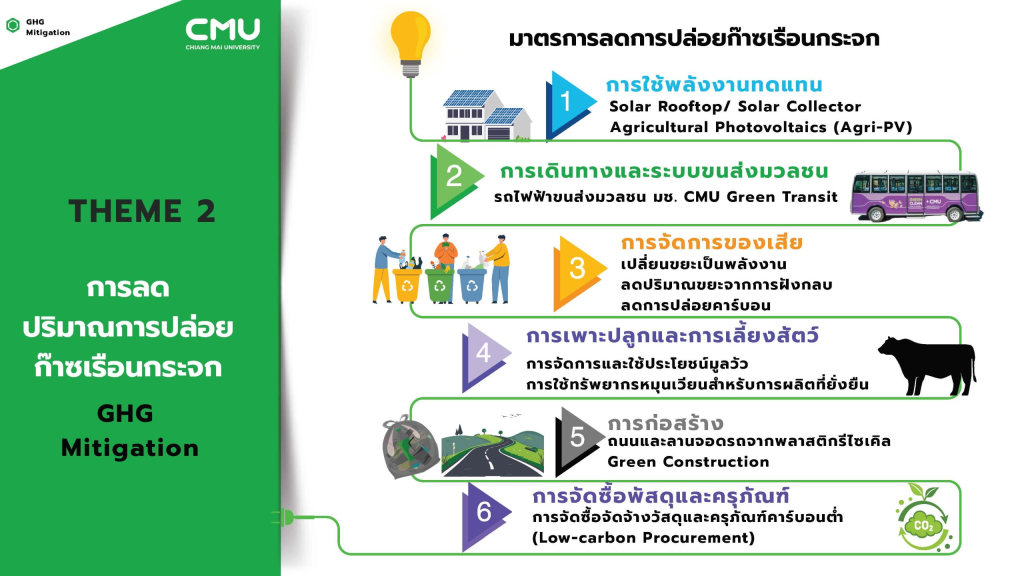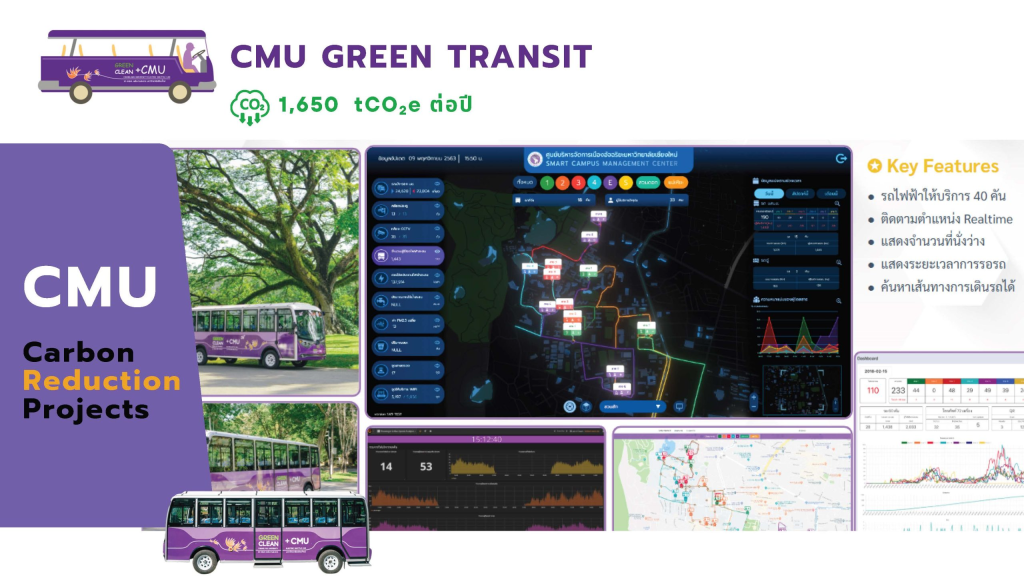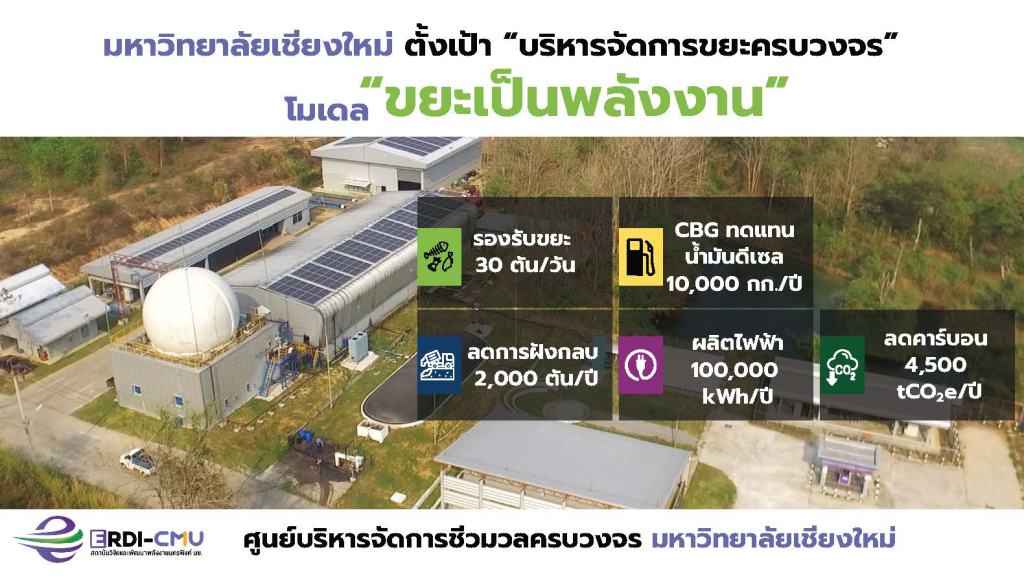Chapter 2: Greenhouse Gas Emission Reduction (GHG Mitigation)
CMU Aims to Be a “Carbon Neutral University”
Part 2: Greenhouse Gas Emission Mitigation (GHG Mitigation)
After Chiang Mai University (CMU) laid the foundation for Carbon Footprint Monitoring and Assessment, another important step toward achieving the goal of a Carbon Neutral University is GHG Mitigation through concrete measures and projects across all aspects of energy, resource, and operational management.
________________________________________
🔎 Key Measures for GHG Emission Reduction
1. Renewable Energy Use
o Solar Rooftop and Solar Collector installations totaling over 12.68 MWp currently, with a target of expanding to 25 MWp by 2029.
o Agricultural Photovoltaics (Agri-PV) Project, which integrates solar energy with agriculture. For both energy and space efficiency.
2. Travel and Mass Transit
o The CMU Green Transit project, with over 40 electric trains in service, reduces greenhouse gas emissions by over 1,650 tCO₂e per year.
3. Waste Management
o Converting waste to renewable energy, reducing landfills by over 2,000 tons per year.
o Reducing greenhouse gas emissions by over 4,500 tCO₂e per year.
4. Farming and Animal Husbandry
o Managing cow dung and renewable resources for sustainable energy production.
o Reducing greenhouse gas emissions by over 500 tCO₂e per year.
5. Environmentally Friendly Construction
o The Recycled Plastic Road project, using recycled plastic in asphalt, reduces carbon emissions by 100 tCO₂e per year.
6. Low-carbon Procurement
o Promoting the use of materials and equipment that reduce greenhouse gas emissions throughout the product lifecycle. ________________________________________
⚡ CMU’s concrete carbon reduction projects
• Solar Rooftop: Reduces carbon emissions by over 9,700 tCO₂e per year
• Battery Energy Storage System (BESS): 1.29 MWh of energy storage reduces carbon emissions by 275 tCO₂e per year
• Agri-PV: Produces clean energy from agriculture, reducing emissions by 77 tCO₂e per year
• Waste to Energy: Generates electricity from waste, reducing emissions by over 4,500 tCO₂e per year
________________________________________
📊 Smart Campus Management
CMU has also developed a real-time energy monitoring and tracking system via a digital platform. This allows all units within the university to view electricity usage data, efficiently control energy use, and improve management to reduce carbon in all activities. ________________________________________
🌍 CMU aims to transform “waste into energy.”
The Chiang Mai University Integrated Biomass Management Center is another clear example. It can:
• process over 30 tons of waste per day
• generate 100,000 kWh of electricity per year
• reduce greenhouse gas emissions by over 4,500 tCO₂e per year
________________________________________
✅ Taking a step towards sustainability
With these measures, Chiang Mai University is creating a model for reducing greenhouse gas emissions in all dimensions, including energy, transportation, waste, agriculture, and construction, to drive the goal of becoming a truly carbon-neutral university.
👉 In this third article, we will continue with Theme 3: Carbon Sequestration & Absorption.










